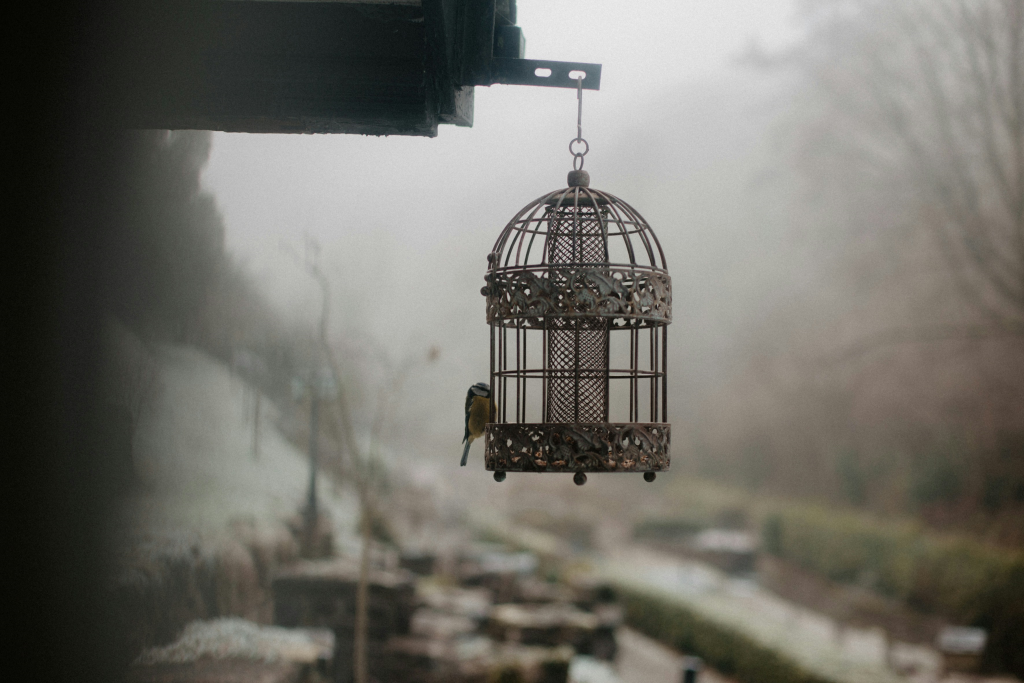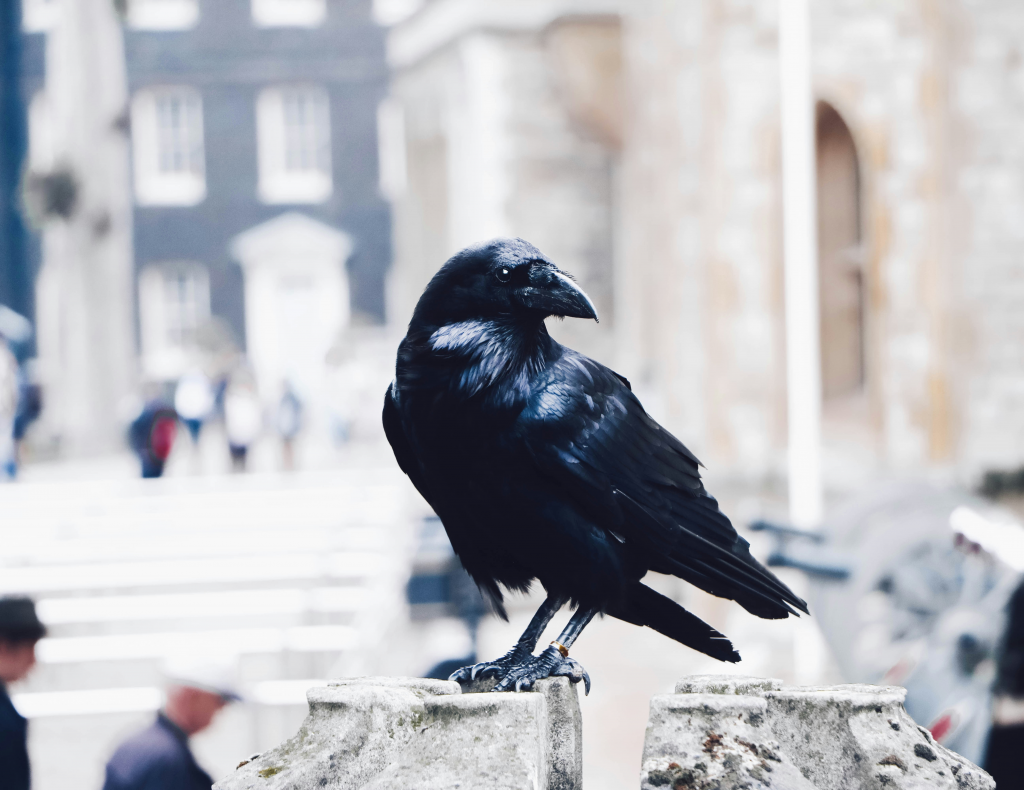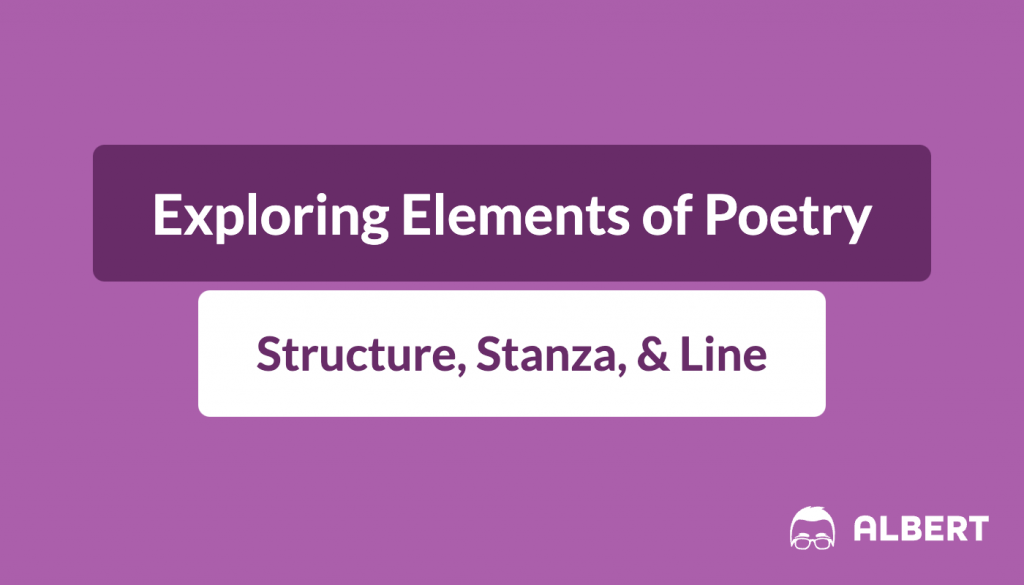Introduction to the Elements of Poetry
The three core elements of poetry are poetic structure, poetic language, and poetic sound devices. Poetry is very different from prose in both style and purpose. Prose takes on a longer, more narrative form, while poetry is much more concise. Poetry paints a picture for the reader instead of telling a story (even though there are narrative poems out there).
For example, even though a story is embedded in Poe’s narrative poem, “The Raven”, Poe’s purpose is to show the crippling effect of overwhelming grief. He accomplishes this through several poetic elements, but especially through a continual rhyme scheme and the imagery of a dark raven embodying the narrator’s never-ceasing sorrow.
The Importance of Poetic Structure
Poetic structure does a few things. First, it allows the poet to take the reader by the hand and guide them through the poem, showing them exactly what to focus on in a particular order. To help poets do this successfully, there are many tools at the writer’s disposal when building poem structures, such as, lines, stanzas, rhyme scheme, and meter. Each of these not only work together to provide a roadmap for the reader, but they influence the tone and mood of the poem as well
For example, in her poem, “Caged Bird”, Maya Angelou structures her poem by describing a free bird in the first stanza then contrasting by describing a caged bird in the second stanza. As you can imagine, the description of the free bird has a much happier tone than the description of the caged bird. However, after following this particular structure of contrasting these two birds throughout the poem, Angelou ends with the caged bird still finding hope despite its circumstances with the line, “the caged bird sings of freedom”.
As you can see in Angelou’s poem alone, poetic structure is highly dependent on patterns. A break from an established pattern in a poem is meant to signal a shift or change to the reader. If you think about it, poetry is one of the most mathematical forms of writing. From the number of lines to the meter of the poem, quite a bit of calculating is involved! While following poetic structure can make poem-writing more challenging than writing a short story, sometimes it is these strict guidelines that allow writers to push themselves to write in more creative ways.

Poem Stanza: Building Blocks of a Poem
What is a stanza in a poem? The majority of poems are divided into stanzas or a group of lines with an identifiable structure that repeats throughout the poem. Sometimes the structure is based on a certain meter. Other times structure is built around a rhyme scheme. Or the poem structure could even be determined by a specific number of lines per stanza.
There are many different types of stanzas, and these different types each correlate with the French form of a number. For example, a one-lined stanza is called “monastic” (mono= one). Likewise, a two-lined stanza is called a “couplet” (couple= two). Shakespeare loved using the couplet at the end of his famous 14 line poems called sonnets.
The most important thing to remember about poem stanzas is that whatever the structure is, it must be consistent throughout the poem.
Line Structure: Crafting the Flow
When writing a poem, it can be challenging to decide where to end a line and continue onto the next line of a stanza. This is called a line-break. New poets can mistakenly think that each line has to be a complete sentence. It is perfectly normal to line-break in the middle of a sentence, but it has to be done intentionally. Misplaced line-breaks in a poem can make or break the “flow” or rhythm of a poem.
For example, consider Robert Frost’s poem, “Stopping by the Woods on a Snowy Evening.” Frost regularly breaks up sentences across lines:
“My little horse must think it queer
To stop without a farmhouse near
Between the woods and frozen lake
The darkest evening of the year.”
Frost, Robert. “Stopping by Woods on a Snowy Evening.” Poetry Foundation, 1 Jan. 1995, https://www.poetryfoundation.org/poems/42891/stopping-by-woods-on-a-snowy-evening. Accessed 29 Jan. 2024.
Two things are happening in this poem. One, Frost has a predetermined rhyme scheme to follow (aaba). This determines which words need to be at the end of each stanza. Additionally, Frost chose to place only adjectives and nouns at the end of his stanzas. Articles, possessive pronouns, and prepositions are only at the beginning of lines. By doing this, Frost shows the reader which words are most important in his poem, and those are the words at the end of each line.
Whether meter or rhyme determines the structure of the lines within a stanza, writers should be intentional in selecting words and in placing those words within the poem in order to communicate the right message to the reader.

Analyzing “The Raven” by Edgar Allen Poe
“The Raven” by Edgar Allan Poe is a great place to start. This is a longer poem at 18 stanzas and six lines per stanza (sestet). As already mentioned, this is a narrative poem, but the story is not the main focus.
Impact of Poetic Structure
Let’s look at the first stanza:
“Once upon a midnight dreary, while I pondered, weak and weary,
Over many a quaint and curious volume of forgotten lore—
While I nodded, nearly napping, suddenly there came a tapping,
As of someone gently rapping, rapping at my chamber door.
“’Tis some visitor,” I muttered, “tapping at my chamber door—
Only this and nothing more.”
Poe, Edgar Allan. “The Raven.” Poetry Foundation, https://www.poetryfoundation.org/poems/48860/the-raven. Accessed 29 Jan. 2024.
Like a story, Poe uses the first seven stanzas to introduce the setting and characters in the poem. Terrified, the narrator speaks into the darkness, attempting to guess what visitor is at his door. He hears a voice whisper, “Lenore”. Whether it is in his head or spoken by the visitor, the utterance of this name provides the narrator with enough courage to open the door.
By the seventh stanza, the Raven enters the house. By the eighth stanza, the narrator and the raven begin conversing with one another. Since the narrator is convinced that the Raven has come to visit him from the Underworld, he unceasingly questions the Raven about the afterlife, consumed by the memory of his late wife, Lenore.
Each stanza for the remainder of the poem represents a different thought or phrase spoken by the narrator. The raven’s consistent and frustrating response is “nevermore”. For example:
“Then this ebony bird beguiling my sad fancy into smiling,
By the grave and stern decorum of the countenance it wore,
“Though thy crest be shorn and shaven, thou,” I said, “art sure no craven,
Ghastly grim and ancient Raven wandering from the Nightly shore—
Tell me what thy lordly name is on the Night’s Plutonian shore!”
Quoth the Raven “Nevermore.”
Poe, Edgar Allan. “The Raven.” Poetry Foundation, https://www.poetryfoundation.org/poems/48860/the-raven. Accessed 29 Jan. 2024.
Impact of Poetic Elements: Sound Devices & Repetition
Poe clearly establishes the poetic structure of “The Raven”. Not only does he maintain a consistent rhyme scheme and rhythm throughout the poem, he includes sound devices. Using alliteration (“weak and weary”) and assonance (“quaint and curious”), he replicates the narrator’s increasing frustration throughout the poem.
Poe uses repetition in a couple of ways; first, he uses it to establish a consistent rhyming pattern using the name, “Lenore”. Since Poe wants his readers to understand the narrator’s obsession, he has the speaker only choose words that sound like this name. Secondly, Poe uses repetition to reveal the speaker’s descent into insanity through the raven’s solitary response of “nevermore”.
Therefore, this is not a poem about a person named Lenore, or even about a spooky raven who visits someone with insomnia. This poem is about the obsessive, controlling, debilitating nature of grief after losing a loved one. Poe ensures that his reader understands this message through his careful poetic structure and his skillful use of poetic language and devices.

Variations in Poem Structure
There are also variations in poem structure. As stated before, poets may choose to break away from an established pattern in a poem to signal a shift or change to the reader. There are also many different types of poems with pre-established rhyme and meter patterns, such as limericks, haikus, acrostic poems, and sonnets to name a few.
There are also free verse poems without an established rhyme or meter that are more conversational in nature. Whether reading or writing poetry, it is helpful to understand the type of poetic structure you are undertaking before diving in.
Conclusion
To recap, the three core elements of poetry are poetic structure, poetic language, and poetic sound devices. This post covered the basics of poetic structure: lines, stanzas, rhyme scheme, and meter. Poetic structure is important because it not only provides a framework for the writer, but it also helps lead the reader through the poem and to the central message. You can find other posts on Albert.io with an in-depth look at both poetic language and poetic sound devices.
Or, for more in-depth practice analyzing poetic elements, check out our Poetry course!








